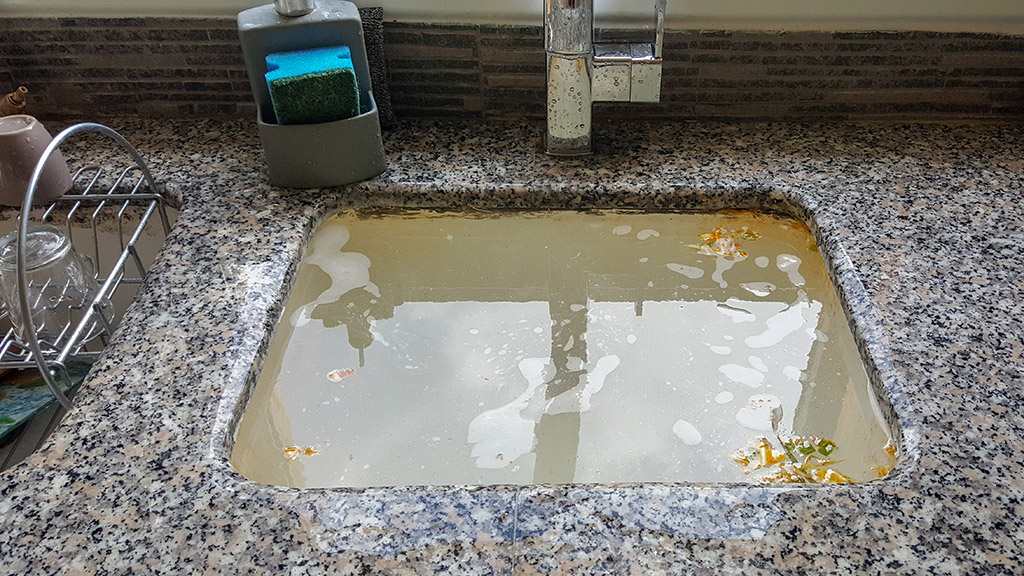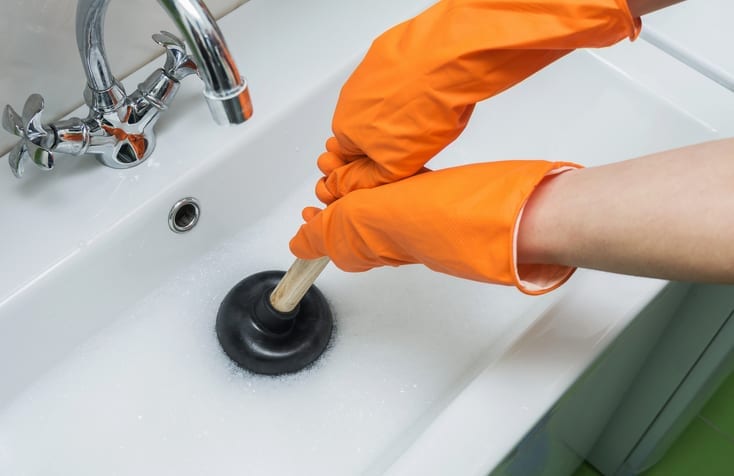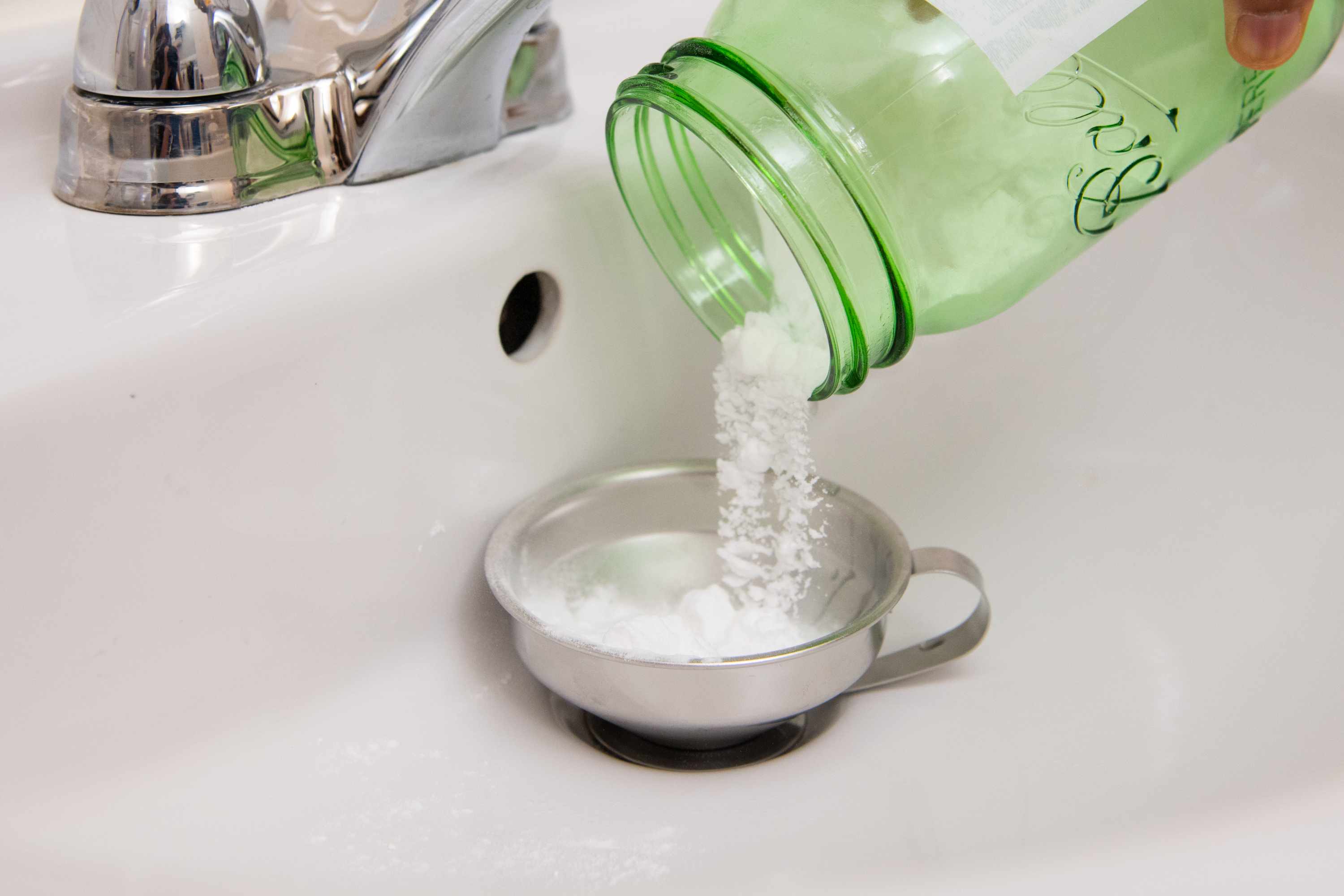If you’re trying to drain your sink and nothing seems to be coming out, it’s most likely clogged. Clogged kitchen sinks are one of the most prevalent drainage problems that homeowners face, owing to the fact that food debris and soap residue are draining nightmares. Clogged drains are fortunately one of the most simple house repairs to perform.
Photo Courtesy: Metro Plumbing
When it comes to the kitchen sink, don’t expect chemical-based drain cleaners to be the quick remedy. Even if the obstruction appears to be fixed, the chemicals can occasionally cause more damage to your system. Other clog-removal procedures, some of which involve common home objects and others that need a simple plunger or plumber’s snake action, can help you prevent these disasters.
There’s a strong possibility you’ll be able to unclog your kitchen sink using one of these five methods:
1. Use boiling water.
The most common cause of clogs in sinks and tubs is a combination of hair, grease, soap residue, and tepid water trapped in the drain trap just below the drain opening. If the clog is made up of soap scum or grease, pouring a pot of boiling water down the drain into the trap may help dissolve it. It’s not enough to use hot tap water; you’ll need to use boiling water.
Bring half a gallon of water to a boil in a pot on the stove or in a kettle. Then, immediately into the drain opening, pour the boiling water. After that, turn on the faucet to see if the water is draining evenly. Repeat the process if the water is still draining slowly or standing still in the sink.
Note that this method should not be used if your drain is connected to PVC pipes, as the boiling water may melt or damage the plastic.
If the second attempt with hot water fails to clear the clog, it’s time to try another option.
2. Use a plunger.
If you have standing water in your sink, plunging it is the best approach to get it to drain. You’ll need a plunger, but not the one from your bathroom, so make sure it’s clean. It’s a good idea to have a little plunger under your sink just in case.
If you have a double sink, make sure the other end is plugged before you start to keep the seal intact and prevent any water from leaking out the other end.
To create a suctioning effect, place the plunger over the drain in your sink and firmly pump up and down until the water starts to drain. After all of the stagnant water has been removed from the sink, flush the drain with clean water to ensure it is clear. You’ll have to plunge again if it isn’t.
It’s time to try an alternative strategy if the sink is still not draining properly after repeated plunging tries.
3. Use baking soda and vinegar mixture.
Photo Courtesy: The Spruce
This method is a safer, more natural alternative to utilizing chemical drain cleaners to clear clogged drains. Baking soda and vinegar are also typical household ingredients that you’re likely to already have in your kitchen, which is great. This causes a bubbling response, which breaks up larger bits of muck and allows them to easily pass into the drain.
Begin by boiling some water in a kettle and then pouring it down the drain. It must be boiling, not merely hot tap water, in order to dissolve and release food particles and other minor obstructions. This will assist in flushing the drain, but it will not remove the clog completely. If you have PVC pipes, however, you should omit this step since it may weaken the pipe seals. After you’ve done the vinegar and baking soda treatment, you can still flush with hot tap water.
After that, pour a cup of baking soda down the drain and wait a few minutes. To push the baking soda down the drain, you may need to use a wooden spoon, rubber spatula, or plastic tool. If you don’t want metal or anything sharp scraping up your sink, don’t use it.
Pour in a cup of white distilled vinegar after the baking soda has sat for a while. The combination will cause a fizzy response, which will aid in the unclogging of the obstruction. Plug the sink with a stopper for roughly 15 minutes. Boil another kettle of water at this time. After the time is up, pour the boiling water down the sink to flush it once more.
This natural approach, like any other unclogging method, can not guarantee 100% results. If it appears that you’re making progress on the clog after following the procedures, repeat the procedure to double down on the obstruction.
4. Remove and clean the drain trap.
:max_bytes(150000):strip_icc():format(webp)/replacing-a-sink-p-trap-2718773-hero-f3f65fbc400e41438c4d8280de025fc6.jpg)
Photo Courtesy: thespruce.com
The blockage may be found in the drain trap, also known as a U-pipe or P-trap, which is positioned beneath the sink and is located below the garbage disposal. The P-trap is located under the sink, usually inside a cabinet, near the bend of the drainpipe. The component of your sink that prevents dirt and sewer gases from rising up via the drain is this.
To dislodge any meals stuck in the drain, carefully push a straightened coat hanger through the slot in your sink. If it doesn’t work, you’ll have no choice except to disassemble the P-trap.
The P-trap is fashioned like a U and is positioned beneath the sink. Put on a pair of gloves (such as plastic dishwashing gloves or leather gloves that you don’t mind getting dirty) and position a bucket, trash can, or garbage bag beneath the pipes to capture any stuck food or water. If the fittings are too tight, use pliers to loosen them.
Now that it’s out, push the food through using a strong tool like a knife or a coat hanger, scraping the sides for any grease. You can now reattach the P-trap and watch the water drain as it should.
5. Try the plumber’s snake.

Photo Courtesy: City Plumbing
A plumber’s snake is a useful tool for clearing obstructions in the drainage system beneath your kitchen sink. The tool has a spiral snake with a coiled-coil that stretches down into the drain. You may turn the handle to dislodge the debris and draw it out of the drain whenever the snake hits an obstruction.
If you don’t have a plumber’s snake, a wire coat hanger might be used as a substitute. Simply unwind the hanger into a long strand of wire with a pair of needle-nose pliers. Keep the hooked end since it will be used to grab the debris. If required, use the pliers to adjust the hook’s angle so that it fits through the drain opening easily.
Simply feed it down the drain a few feet at a time, regardless of whatever tool you’re using. If you push too hard, you can end up pushing the clog deeper down the pipe. Hook it on and draw the debris up through the drain when you feel the tip of your tool touch a blockage. Continue doing so until you’re certain the blockage is gone. To clean any leftover material, run hot water down the drain for a minute or two.
If none of the above has improved the drain’s speed, it’s time to call a professional.
Enjoyed reading this article? You might want to look into these other articles:
8 Most Common Plumbing Problems and Plumbing Tools
5 Common Household Faucet Problems and How to Fix them
10 space-saving hacks for small kitchens
CITATIONS:
- 9 Ways to Unclog a Kitchen Sink Drain. American Home Shield. (n.d.). Retrieved October 14, 2021, from https://www.ahs.com/home-matters/repair-maintenance/how-to-unclog-your-kitchen-sink-drain/.
- Bungalow Team. (2020, June 10). Seven easy ways to unclog your kitchen sink. Bungalow. Retrieved October 14, 2021, from https://bungalow.com/articles/seven-easy-ways-to-unclog-your-kitchen-sink.
- Formisano, B. (2021, September 12). How to unclog a sink drain. The Spruce. Retrieved October 14, 2021, from https://www.thespruce.com/how-to-unclog-a-sink-1824913.
- Teague, K. (2021, August 15). 3 ways to unclog a sink: No harsh chemicals needed. CNET. Retrieved October 14, 2021, from https://www.cnet.com/home/kitchen-and-household/clogged-sink-3-easy-fix-it-methods-with-things-you-already-have-around-the-house/.
- Team HomeServe. (2020, June 9). Kitchen sink not draining? Here are 6 ways to unclog it. HomeServe. Retrieved October 14, 2021, from https://www.homeserve.com/en-us/blog/how-to/unclog-kitchen-sink/.
![]()













